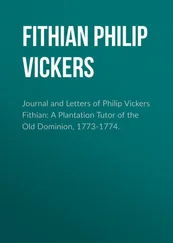13. Vernadsky et al., Source Book, vol. 3, pp. 612-13.
14. The point is made by Thaden in his Russia’s Western Borderlands, p. 239.
15. B. Sumner, Russia and the Balkans 1870-1880 (Oxford, 1937), pp. 6off.
16. Translated, with some omissions, from the text in M. Baring and D. Costello, eds., The Oxford Book of Russian Verse (Oxford, 1944), pp. 130-31.
17. Sumner, Russia and the Balkans, pp. 580—82.
18. See J. Le Donne, The Russian Empire and the World 1700—1917: The Geopolitics of Expansion and Containment (New York and Oxford, 1997), esp. map 5, p. 134.
19. B. Sumner, Tsardom and Imperialism in the Far East and Middle East, 1880-1 9 14 (London, 1940), pp. 21—31.
20. I have adapted T. von Laue’s translation in Journal of Modern History, 26 (March 1954), 64-73.
21. See B. Mitchell in Cipolla, ed., Fontana Economic History of Europe, vol. 4, pt 2, pp. 793—4, 773, 775; A. Gerschenkron’s contributions to The Cambridge Economic History of Europe, vol. 6 (Cambridge, 1965); also his Europe in the Russian Mirror (Cambridge, 1970).
22. For the significance of this rare concession without constraint, see N. Bolkhovitinov, ‘The sale of Alaska in the context of Russian-American relations in the 19th century’, in Ragsdale, Imperial Russian Foreign Policy, pp. 193—21; on the background, see Muravev’s memorandum to Alexander II of March 1854 in G. Lensen, The Russian Push towards Japan: Russo-Japanese Relations, 1697-1875 (Princeton, 1959), pp. 300-301.
23. Adapted from Vernadsky et al., Source Book, vol. 3, p. 694, col. 2.
24. M. Baring, What I Saw in Russia (London, n.d. [c. 1905]), p. 40. Also pp. 41-42.
25. For a convenient summation of these developments see Seton-Watson, The Russian Empire, pp. 581—85; also Sumner, Tsardom and Imperialism, pp. 9f.
26. See E. Zabriskie, American-Russian Rivalry in the Far East [1895—1914] (Philadelphia, 1946).
27. For the raw numbers, see McEvedy and Jones, Atlas of World Population History, pp. 81, 79; for an interesting discussion of the reasons and a good introduction to the complexities of and literature on the agrarian problem see Moon, The Russian Peasantry, pp. 165-83, passim.
28. See S. O’Rourke, Warriors and Peasants:The Don Cossacks in Late Imperial Russia (Basingstoke, 2000), ch. 4.
29. See N. Hans, History of Russian Educational Policy (London, 1931), p. 184.
30. See, inter alia, P. Semenov-Tyanshanskii and V. Lamanskii, Russia, 10 vols (St Petersburg, 1899-1914).
31. Kerner, The Urge to the Sea, ch. 5, pp. 94ff.
32. P. Rich, The Tsar’s Colonels: Professionalism, Strategy and Subversion in Late Imperial Russia (Cambridge, Mass., 1998), esp. pp. 7—17 passim.
33. From 83.67 per cent in 1857 to 86.01 per cent in 1897-see Moon, The Russian Peasantry, table 1.3, p. 21.
34. Figures supplied to the Russian ambassador in London by Foreign Minister N. D. Sazonov in coded telegrams dated 29 June and 10 August 1909, in Vernadsky et al., Source Book, vol. 3, p. 750.
35. Sumner, Tsardom and Imperialism, pp. 39-40.
36. Wood, ed., The History of Siberia, p. 2.
37. V. Maklakov was a leading Kadet and a future commissioner (minister) of justice in the provisional government. I have slightly adapted the translation in Vernadsky et al., Source Book, vol. 3, p. 781.
38. Polovtsev, quoted in Vernadsky et al., Source Book, vol. 3, p. 698. Again I have adapted the translation.
39. See Seton-Watson, The Russian Empire, pp. 588-9; also Sumner, Tsardom and Imperialism, p. 5.
40. G. Vitarko, ‘Aviation… and imperatives of modernization’, in Lohr and Poe, eds., The Military and Society in Russia, pp. 273-91.
41. Durnovo to Nicholas II, February 1914, has been widely published. I have based these extracts on the text in Vernadsky et al., Source Book, vol. 3, pp. 793-8.
42. Seton-Watson, The Russian Empire, p. 700.
43. G. Buchanan, My Mission to Russia and Other Diplomatic Memories (2 vols., London, 1923), vol. 2, pp. 48-9.
44. The term bol’sheviki denotes members of the ‘majority’ Social Democrats, as distinct from the mensheviki who would not follow Lenin’s line.
12: THE CONSTRUCTION OF A JUGGERNAUT
1. W. Chamberlin, Russia’s Iron Age (London, 1935), p. 253.
2. A. Brusilow, A Soldier’s Note-Book 1914-1918 (London, 1930), p. 326.
3. L. Pazvolsky and H. Moulton, Russian Debts and Russian Reconstruction (New York, 1924), pp. 20-22, 43-4, 166-7.
4. Grossman, ‘The industrialization of Russia’.
5. The most thorough source on this, as for most of the early history of the USSR, is E. H. Carr, The Bolshevik Revolution, 1917—1923 (3 vols., London, 1950-54); for a continuation of the account, see E. H. Carr, and R. Davies, Socialism in One Country, 1924-1926 (London, 1950) and Foundations of a Planned Economy, 1926—1929 (London, 1969).
6. E. H. Carr, The Soviet Impact on the Western World (London, 1947), p. 23.
7. The declaration is reproduced in English translation as app. 4 of Armstrong, Russian Settlement in the North, pp. 192-3.
8. Allen, The Ukraine, pp. 318—19. The standard work on the inception of Soviet nationality policy is R. Pipes, The Formation of the Soviet Union: Communism and Nationalism (Cambridge, Mass., 1964).
9. R. Service, A History of Twentieth-Century Russia (Cambridge, Mass., 1997), pp. 113-14; Broxup, ed., The North Caucasus Barrier, p. 6.
10. Allen, The Ukraine, pp. 320-4.
11. Olcott, The Kazakhs, pp. 134-56.
12. See Forsyth, A History of the Peoples of Siberia, p. 232.
13. V. Kabuzan, Russkii etnos v 20—80—kh godakh xx veka, p. 273.
14. Statistical Handbook of the USSR for 1928, cited in V. Timoshenko, Agricultural Russia and the Wheat Problem (Stanford, 1932), p. 504 and table II, p. 520.
15. The figures for Britain and the United States are for 1923. See The Works of Nikolai D. Kondrat’ev, ed. N. Maklasheva et al., vol. 3 (London, 1998), p. 366.
16. Ibid., p. 295 (I have slightly adapted S. Wilsons translation).
17. Timoshenko, Agricultural Russia and the Wheat Problem, pp. 26, 28-9.
18. Ibid., table V, p. 527.
19. Quoted in E. Rees, ‘Stalin and Russian nationalism’, in Hosking and Service, eds., Russian Nationalism Past and Present, p. 85.
20. V. Zhiromaksia, Demograficheskaia istoriia rossii k 1930-e gody (Moscow, 2001), p. 66.
21. Ibid., table 12, pp. 80-81, and pp. 83-4.
22. See the report (to Congress) of the Commission on the Ukraine Famine, Washington, DC, 1988. Also R. Conquest, Harvest of Sorrow: Soviet Collectivization and the Terror Famine (London, 1986). Service, Twentieth-Century Russia, pp. 202, 207, disposes of the accusation temperately and economically.
23. Allen, The Ukraine, pp. 321, 324-5.
24. Ibid., pp. 327-8, quoting Pravda, 3 April 1930.
25. I. N. Kiselev, ‘Estestvennoe dvizhenie naseleniia v 1930-kh godakh’, in Iu. Poliakov et al., eds., Naselenie Rossii 1920—1950-e gody: chislennost’, poteri, migratsii (Moscow, 1994), pp. 59-65, esp., pp. 57-8; V. Zemskov, ‘Spetsposolentsy (1930-1959gg.)’, in ibid., pp. 145-69. See also n. 29 below.
Читать дальше





![Stephan Orth - Behind Putin's Curtain - Friendships and Misadventures Inside Russia [aka Couchsurfing in Russia]](/books/415210/stephan-orth-behind-putin-s-curtain-friendships-a-thumb.webp)





